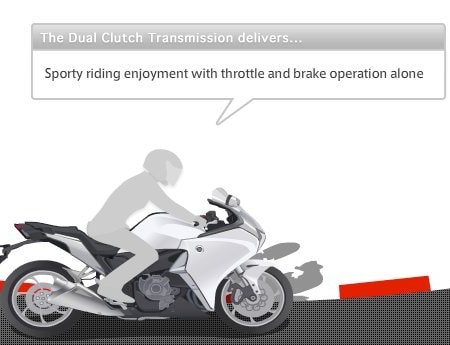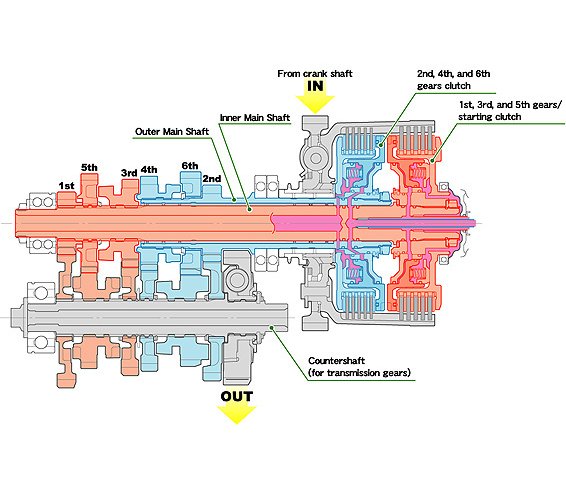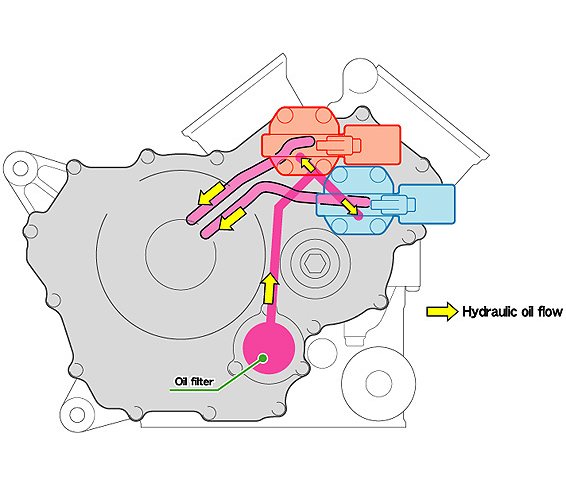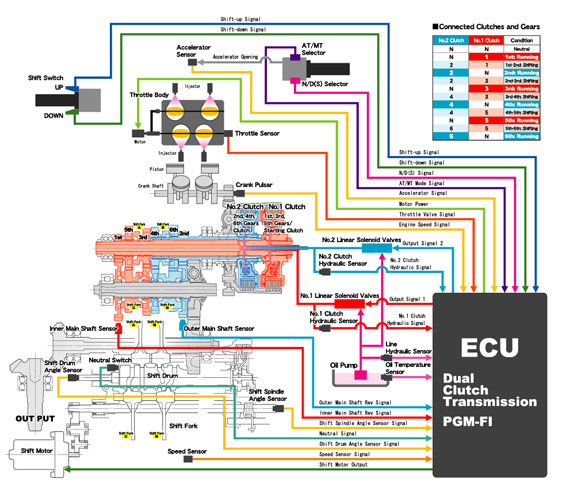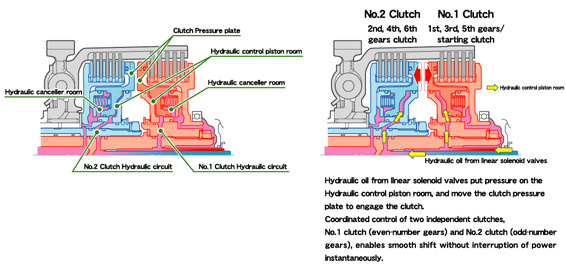After using manual shifting for decades, motorcyclists now have to start getting used to the idea that the future lies in the automatic shifting technologies. So far, this system has only made its way through large displacement bikes, with the first model to incorporate the automatic shifting technology being Honda’s VFR1200F.
The use of the Dual Clutch Transmission, the world’s first fully automatic motorcycle dual clutch transmission for large-displacement sport bikes, takes motorcycle experience to a new level.
Honda developed the Dual Clutch Transmission with automated clutch and shift operation to deliver the same riding enjoyment as a manual transmission with the convenience of an automatic one, for enhanced comfort and sporty performance.
Honda managed to combine the manual gearbox’s direct transmission of engine output to the rear wheel with the uninterrupted power and the ability to control acceleration and deceleration with the throttle and brake alone.
How it works
This transmission features a light and compact design that allows it to be combined with existing engines without substantial layout modification. Moreover, the new transmission delivers precise acceleration control and smooth gear changes. According to Honda, since it uses conventional transmission gears, it’s as durable as Honda’s conventional manual transmissions as well as being equally efficient.
The Dual Clutch Transmission is equipped with two main operating modes: AT mode, which changes gears automatically; and MT mode, which allows the rider to change gears manually using paddle shifters. There are two full-auto modes (D-mode for regular operation and S-mode for sporty riding), and a six-speed gear-select mode for full rider control that deliver the same shifting response as a manual transmission.
The Dual Clutch Transmission configuration employs independent clutches for the odd-numbered gears (1st, 3rd, 5th) and the even-numbered gears (2nd, 4th, 6th), respectively. The two clutches operate alternately to effect gear changes. For example, when changing from 1st to 2nd gear, the computer detects the up-shift and engages 2nd gear, then releases the 1st-gear clutch while engaging the 2nd-gear clutch to achieve a smooth gear change. This ensures a fast and efficient transition that delivers extremely quick shifts.
The VFR1200F’s transmission employs dual concentric input shafts (one shaft runs inside the other hollow shaft), an exclusive in-line clutch design, and concentration of hydraulic circuitry beneath the engine cover to achieve a compact design. Compactness and lightness is further enhanced through the use of a simple shift mechanism design based on that of a conventional motorcycle shift drum. Optimized shift scheduling achieves fuel efficiency equal to or better than that of a fully manual transmission, enabling this Dual Clutch Transmission to deliver both sporty riding and economical performance.
"Once an essential skill required for the riding experience, manual operation of a clutch and shift mechanism is no longer a prerequisite or an impediment for motorcycle operation. Both riders of less experience and skilled riders have one less task to deal with, which means more brain power to focus on all the other joys of sport riding. Of course, many riders may still prefer a manual-shift transmission, which is why the VFR1200F gives you a choice."
"But for those who have been waiting for a high-performance motorcycle featuring true automatic shift modes with easy, seamless operation, as well as riders who are eager to embrace new technology, the 2010 VFR1200F with Dual Clutch Transmission puts full-on sport-bike abilities at your fingertips—automatically."
The Dual Clutch Transmission is equipped with two main operating modes: AT mode, which changes gears automatically; and MT mode, which allows the rider to change gears manually using paddle shifters. There are two full-auto modes (D-mode for regular operation and S-mode for sporty riding), and a six-speed gear-select mode for full rider control that deliver the same shifting response as a manual transmission.
The Dual Clutch Transmission configuration employs independent clutches for the odd-numbered gears (1st, 3rd, 5th) and the even-numbered gears (2nd, 4th, 6th), respectively. The two clutches operate alternately to effect gear changes. For example, when changing from 1st to 2nd gear, the computer detects the up-shift and engages 2nd gear, then releases the 1st-gear clutch while engaging the 2nd-gear clutch to achieve a smooth gear change. This ensures a fast and efficient transition that delivers extremely quick shifts.
The VFR1200F’s transmission employs dual concentric input shafts (one shaft runs inside the other hollow shaft), an exclusive in-line clutch design, and concentration of hydraulic circuitry beneath the engine cover to achieve a compact design. Compactness and lightness is further enhanced through the use of a simple shift mechanism design based on that of a conventional motorcycle shift drum. Optimized shift scheduling achieves fuel efficiency equal to or better than that of a fully manual transmission, enabling this Dual Clutch Transmission to deliver both sporty riding and economical performance.
Here is what Honda has to say about its Dual Clutch Transmission system:
"Once an essential skill required for the riding experience, manual operation of a clutch and shift mechanism is no longer a prerequisite or an impediment for motorcycle operation. Both riders of less experience and skilled riders have one less task to deal with, which means more brain power to focus on all the other joys of sport riding. Of course, many riders may still prefer a manual-shift transmission, which is why the VFR1200F gives you a choice."
"But for those who have been waiting for a high-performance motorcycle featuring true automatic shift modes with easy, seamless operation, as well as riders who are eager to embrace new technology, the 2010 VFR1200F with Dual Clutch Transmission puts full-on sport-bike abilities at your fingertips—automatically."
